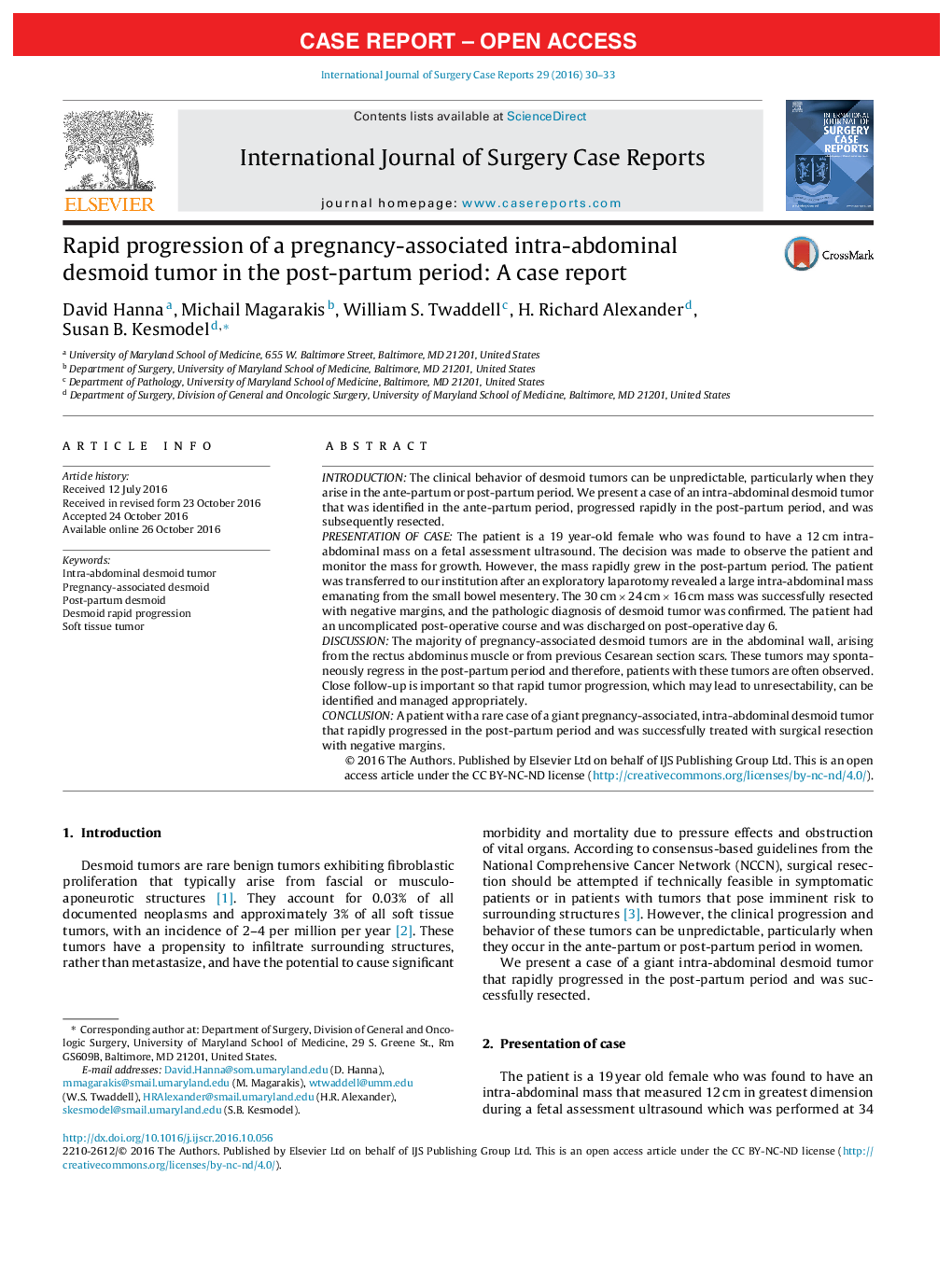| Article ID | Journal | Published Year | Pages | File Type |
|---|---|---|---|---|
| 5733302 | International Journal of Surgery Case Reports | 2016 | 4 Pages |
â¢Desmoid tumors are rare neoplasms with unpredictable clinical behavior.â¢Intra-abdominal desmoid tumors are uncommon in pregnancy.â¢Spontaneous regression of pregnancy-associated desmoid tumors may occur post-partum.â¢Desmoid tumors may be initially managed with observation alone.â¢Surgical resection may be required for large, symptomatic tumors.
IntroductionThe clinical behavior of desmoid tumors can be unpredictable, particularly when they arise in the ante-partum or post-partum period. We present a case of an intra-abdominal desmoid tumor that was identified in the ante-partum period, progressed rapidly in the post-partum period, and was subsequently resected.Presentation of caseThe patient is a 19 year-old female who was found to have a 12 cm intra-abdominal mass on a fetal assessment ultrasound. The decision was made to observe the patient and monitor the mass for growth. However, the mass rapidly grew in the post-partum period. The patient was transferred to our institution after an exploratory laparotomy revealed a large intra-abdominal mass emanating from the small bowel mesentery. The 30 cm Ã 24 cm Ã 16 cm mass was successfully resected with negative margins, and the pathologic diagnosis of desmoid tumor was confirmed. The patient had an uncomplicated post-operative course and was discharged on post-operative day 6.DiscussionThe majority of pregnancy-associated desmoid tumors are in the abdominal wall, arising from the rectus abdominus muscle or from previous Cesarean section scars. These tumors may spontaneously regress in the post-partum period and therefore, patients with these tumors are often observed. Close follow-up is important so that rapid tumor progression, which may lead to unresectability, can be identified and managed appropriately.ConclusionA patient with a rare case of a giant pregnancy-associated, intra-abdominal desmoid tumor that rapidly progressed in the post-partum period and was successfully treated with surgical resection with negative margins.
